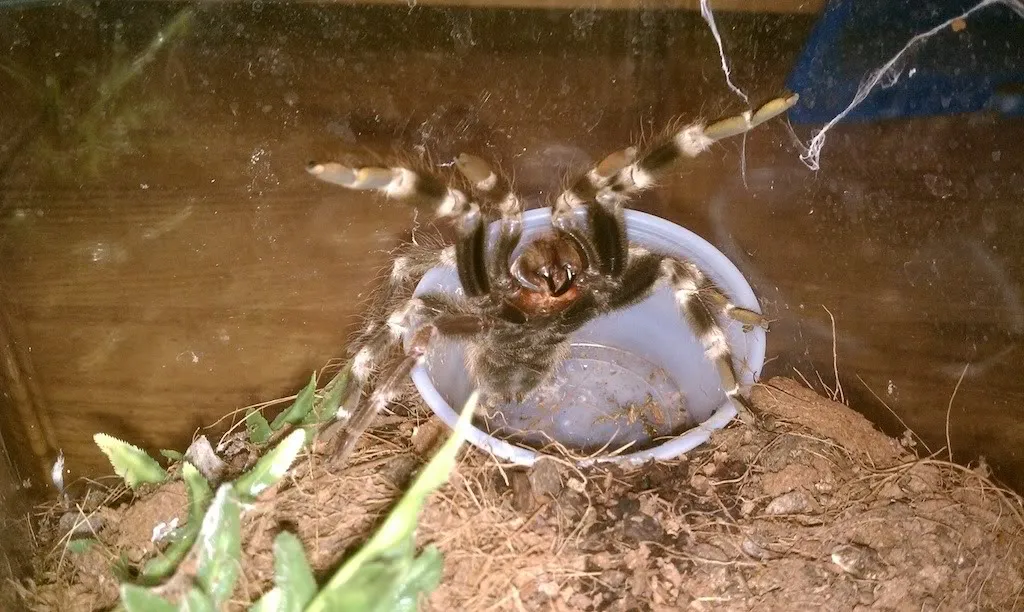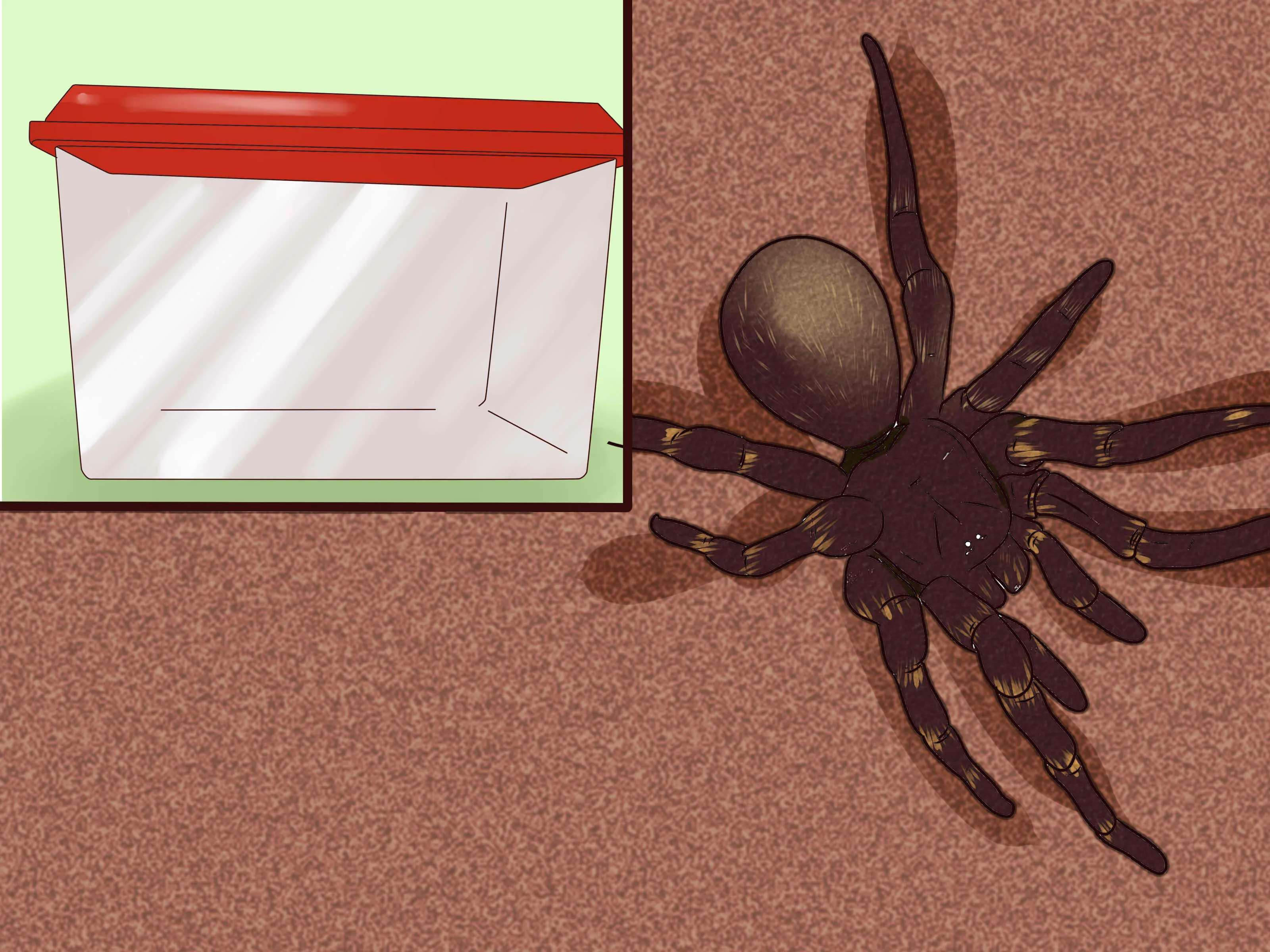What are Tarantulas and Why Spawn Them?
Tarantulas, those fascinating eight-legged creatures, often evoke a mix of fear and fascination. These large, hairy spiders are popular pets, and for dedicated enthusiasts, spawning them can be a rewarding experience. Understanding the reasons behind spawning tarantulas, whether for conservation, research, or simply to expand a collection, is the first step. The process requires knowledge, patience, and a commitment to providing the best possible care for both the adult tarantulas and their offspring. Considering the ethical implications of breeding and ensuring responsible practices is crucial before embarking on this undertaking. Proper research and understanding of the species’ needs are also very important to ensure you provide a safe and healthy environment for the spiders and their potential offspring. Breeding tarantulas is not a casual endeavor and requires detailed attention and responsibility.
Understanding Tarantula Life Cycle
Before you can successfully spawn tarantulas, grasping their life cycle is paramount. Tarantulas undergo a process called molting, where they shed their exoskeleton to grow. This process is key to their development and understanding its timing is critical. The life cycle includes the stages from egg sac to spiderling, through various molts, and finally to adulthood. Female tarantulas typically live much longer than males, sometimes several decades, while males mature faster but have a shorter lifespan. Familiarizing yourself with the different phases of the life cycle helps you anticipate the spiders’ needs and provide the appropriate care at each stage. Accurate observation of the spiders behavior is also essential for recognizing signs of molting, mating readiness, and potential health issues. This knowledge underpins the ability to successfully breed tarantulas.
Mating Process and Environmental Factors

Spawning tarantulas is a delicate dance between the male and female, influenced by environmental factors. The mating process begins when a mature male, often smaller than the female, approaches her. The male must create a ‘sperm web’ and transfer sperm to his pedipalps before attempting to mate. Environmental factors such as temperature, humidity, and photoperiod can significantly affect the tarantulas’ reproductive behavior. Mimicking the natural environment, especially seasonal changes, can encourage successful mating. Understanding the triggers that initiate mating behavior, like variations in day length or temperature, can improve your chances of a successful spawn. Creating a stable environment that replicates the tarantulas’ natural habitat will greatly increase the likelihood of a mating event. This meticulous replication is key to encouraging successful spawning.
The Importance of Temperature and Humidity
Temperature and humidity are critical factors in the successful spawning of tarantulas. Tarantulas are ectothermic, meaning their body temperature relies on their surroundings. Maintaining the correct temperature range for the species is essential for their health and reproductive function. Similarly, proper humidity levels prevent dehydration and aid in molting. You will need to monitor and control both temperature and humidity levels precisely. This involves using appropriate heating and humidifying equipment and regular monitoring with thermometers and hygrometers. Different species will have unique requirements, so research the specific needs of your tarantula species. A consistent and stable environment supports all aspects of the spiders’ lives, from general health to successful mating and egg development.
Selecting Healthy Tarantulas
The success of your breeding efforts heavily relies on the health of the tarantulas you select. Both the male and female must be in prime condition to ensure a healthy mating and viable offspring. Look for active tarantulas with no signs of illness or injury. The female should be well-fed and have a healthy abdomen, while the male should be mature and capable of mating. Examining the tarantulas closely for any signs of parasites, infections, or other health issues is important. You can do this by consulting a vet specialized in exotic animals. Purchasing tarantulas from reputable sources, such as breeders or pet stores that prioritize animal health, is recommended. Quarantining new tarantulas before introducing them to your existing collection can prevent the spread of any potential diseases. Selecting healthy tarantulas ensures a better chance of a successful spawning and the production of healthy spiderlings.
Choosing the Right Species

Not all tarantula species are suitable for first-time breeders. Some species are easier to spawn than others, with readily available information on their care and breeding habits. Researching the specific needs and behaviors of each species is crucial. Consider the availability of information, the temperaments, and the environmental requirements when selecting a species. Some species are known to be more prolific breeders, making them good choices for beginners, while others may present more challenges. Consider the size and lifespan of the tarantulas. The more you know about a species, the better prepared you will be. Choosing a species well-suited to your experience level and the resources available will greatly increase your chances of success. Prioritize species known for their relatively docile temperaments and ease of breeding.
Setting Up the Breeding Enclosure
A well-designed breeding enclosure is essential for facilitating mating and providing a safe environment for both tarantulas. The enclosure should be large enough to accommodate both tarantulas comfortably, with enough space for the female to move and establish her territory. Provide appropriate substrate, hides, and climbing structures to mimic the natural habitat. Ensure the enclosure is escape-proof and offers adequate ventilation while maintaining the required temperature and humidity levels. Use a secure lid and make sure there are no gaps or openings through which the tarantulas can escape. The setup should provide opportunities for the male and female to interact. This includes the placement of hideouts that offer them the ability to retreat if necessary, particularly for the male. The enclosure must be specifically designed for spawning to increase the likelihood of successful mating.
Creating a Suitable Habitat
The habitat for your breeding tarantulas should closely resemble their natural environment. Researching the specific habitat requirements of your chosen species is important. This includes understanding the substrate preferences, the need for hiding places, and the ideal moisture levels. The substrate should be appropriate for burrowing or web-spinning, as necessary. Provide secure hides, such as cork bark or artificial caves, where the tarantulas can feel safe and retreat when needed. Maintain the correct temperature and humidity levels with the use of appropriate equipment. Regularly clean and maintain the enclosure to prevent the buildup of waste or mold. The overall aim is to create a stress-free environment that mimics the tarantulas’ natural surroundings. Doing so creates a positive impact on their reproductive behavior and overall well-being.
Feeding and Hydration

Proper nutrition and hydration are fundamental for the health and reproductive success of tarantulas. Provide a varied diet of appropriately sized insects, such as crickets, roaches, and mealworms. Adjust the feeding schedule based on the species and the size of the tarantulas. The female tarantula should be well-fed before mating to provide her with the necessary resources for egg production. Regularly offer fresh water in a shallow dish. Monitoring the tarantulas’ feeding habits and body condition is essential to detect any potential issues early. Avoid overfeeding. This ensures that tarantulas do not become overweight, which can negatively affect their health and reproduction. Adequate nutrition and hydration provide the necessary building blocks for the development of eggs, sperm, and healthy offspring. Proper food is also important for the tarantulas’ energy during mating and egg-sac creation.
Encouraging Mating Behavior
Encouraging mating behavior requires patience, careful observation, and understanding of tarantula courtship rituals. Introduce the male into the female’s enclosure when she is receptive. This is generally indicated by specific behaviors, such as producing sperm webs or exhibiting less aggression. Monitor the interaction closely, allowing the spiders to mate. The male will use his pedipalps to insert sperm into the female’s epigastric furrow. Be prepared to intervene if the female becomes overly aggressive towards the male. Sometimes the male may need to be removed if she tries to attack him. Maintaining a calm and stable environment, with appropriate temperature and humidity, will encourage mating. Careful planning, observing tarantula’s behavior, and providing a suitable setup are the best ways to encourage successful mating and spawning.
Monitoring the Mating Process
Careful monitoring is crucial during the mating process. The male and female will interact, and the duration and intensity of the mating session can vary depending on the species and the individual spiders. Be prepared to separate the tarantulas immediately after mating to prevent the male from being attacked and eaten by the female. Observe the female for signs of egg production, such as a swollen abdomen. Record the date of the mating and monitor for the formation of an egg sac, which is typically a ball of silk containing the eggs. Keep a detailed record of all activities and observations, including temperature, humidity, and any unusual behavior. Careful monitoring allows you to intervene promptly in case of problems, increase the chances of success and prepare you for the next stages of egg sac management.
Post-Mating Care

After mating, the female tarantula will require special care to ensure the health of the eggs and her well-being. Increase the food supply for the female to provide the resources needed for egg production and care. Maintain optimal environmental conditions, especially temperature and humidity, to promote egg development. Monitor the female for any signs of stress or illness. Provide ample water to prevent dehydration. Observe the female’s behavior and watch for the formation of the egg sac. Be ready to provide additional support, such as removing the egg sac if necessary. The female must be as comfortable and relaxed as possible during the period after mating and before egg laying. Providing appropriate post-mating care optimizes the chances of a healthy egg sac.
Egg Sac Management
Egg sac management is a crucial step in spawning tarantulas. The female will typically create a ball-shaped egg sac of silk, in which she will place the eggs. The duration of egg sac incubation varies depending on the species and environmental conditions. Monitor the egg sac closely for any signs of mold or damage. Some breeders choose to remove the egg sac from the female and incubate it artificially. If you choose to do this, provide the same temperature and humidity conditions required by the mother. Carefully handle the egg sac to minimize the risk of damage to the eggs. Keep the egg sac in a secure, clean environment. Regular monitoring and proper handling of the egg sac are essential for maximizing the chances of successful hatching.
Incubation and Hatching
The incubation period for tarantula eggs varies, so it is important to understand the specific timeline for your species. Maintain the optimal temperature and humidity levels during incubation, as these are critical for proper egg development. Monitor the egg sac for any changes in appearance or texture. If you observe any signs of mold or other problems, take immediate action to prevent the spread of infection. Once the spiderlings hatch, they will emerge from the egg sac and begin to roam the enclosure. The period of incubation is a critical time. The careful handling of the egg sac, and the maintenance of ideal environmental conditions, will increase the chance of successful hatching and the production of healthy spiderlings.
Raising Spiderlings

Raising tarantula spiderlings requires meticulous attention and specialized care. The spiderlings are very small and fragile. Provide a suitable enclosure with proper ventilation, substrate, and hiding places. Feed the spiderlings small, appropriately sized food items, such as fruit flies or pinhead crickets. Offer fresh water daily in a shallow dish. Separate the spiderlings into individual enclosures to prevent cannibalism as they grow. Monitor the spiderlings for molting and growth. This will allow you to adjust the setup and feeding schedule. The spiderlings will continue to molt. Regularly clean and maintain the enclosures to prevent any accumulation of waste or mold. Raising tarantula spiderlings requires attention to detail and understanding their specific needs. Providing the appropriate environment and care will increase the survival rates of these delicate creatures.
Providing Proper Nutrition
Proper nutrition is fundamental to the health and development of tarantulas, from spiderlings to adults. Providing the correct diet is crucial for growth, molting, and reproduction. Offer a varied diet of appropriately sized insects, such as crickets, roaches, and mealworms. Adjust the feeding schedule based on the tarantulas’ age, size, and species. Spiderlings will need to eat more frequently than adults. Ensure the insects are gut-loaded. This process provides the tarantulas with essential nutrients. Remove any uneaten food to prevent mold or the build-up of waste. Providing proper nutrition for your tarantulas, including spiderlings, is key to their survival. It is also essential for their general well-being and to ensure they live long and healthy lives.
Maintaining the Right Environment
Maintaining the right environment is critical for the well-being of tarantulas at all stages of their lives. Regulate temperature and humidity levels to mimic the natural habitat of the tarantula species. Provide proper ventilation. This is important to prevent the buildup of harmful gases. Ensure that the substrate is appropriate for the species. Some species require substrates for burrowing. Provide hiding places, such as cork bark or artificial caves. Regularly clean and maintain the enclosures to prevent the growth of mold and bacteria. Environmental factors can greatly affect the tarantulas’ health and behavior. Precise maintenance is the key to a healthy environment. It ensures the tarantulas will thrive and the spawning will go smoothly.
Common Challenges and Troubleshooting

Breeding tarantulas can present some challenges. Be prepared to troubleshoot any issues. Some of the most common problems include: the female eating the male during mating, the egg sac failing to develop, the spiderlings not hatching, or the spiderlings experiencing high mortality rates. For the female eating the male, be prepared to intervene during mating. If the egg sac fails to develop, review your husbandry practices and environmental conditions. If spiderlings don’t hatch, it could be due to improper incubation or egg sac management. High mortality rates in spiderlings can result from inadequate nutrition, poor environmental conditions, or cannibalism. Keeping detailed records of all aspects of your breeding efforts, along with any problems encountered, will help you identify the causes and adjust your approach. Proper research and a deep understanding of tarantulas are very important when troubleshooting any issues.
Health Issues and Solutions
Tarantulas, like all living creatures, are susceptible to health issues. Common health problems include: infections, parasites, and injuries. Recognize the signs of illness early. These include: loss of appetite, lethargy, or abnormal behavior. If you suspect a health problem, consult a veterinarian specializing in exotic animals. Prevention is key to maintaining tarantulas’ health. This includes maintaining a clean environment, providing proper nutrition, and preventing injuries. Quarantine new tarantulas to prevent the spread of potential infections or parasites. Be vigilant in your observations and ensure the tarantulas’ needs are met. Early detection and intervention are crucial for resolving health problems. Prompt treatment and a focus on preventative care will ensure that your tarantulas remain healthy and thrive.
Preventing Cannibalism
Cannibalism is a significant concern when raising tarantula spiderlings. Tarantulas are naturally predatory, and spiderlings are vulnerable to being eaten by their siblings. To prevent cannibalism, separate the spiderlings into individual enclosures as soon as possible after hatching. This will eliminate competition for food and minimize the risk of one spiderling attacking another. Provide an ample supply of appropriately sized food to ensure that all spiderlings are well-fed. Monitor the spiderlings for signs of aggression, such as chasing or attacking each other. If you notice any aggressive behavior, immediately isolate the aggressive spiderlings. Preventing cannibalism is essential for maximizing the survival rate of the spiderlings. This requires careful planning, attentive observation, and timely intervention.
Ethical Considerations and Responsible Breeding
Breeding tarantulas comes with ethical responsibilities. It is important to prioritize the welfare of the animals at all times. Avoid overbreeding, which can lead to a surplus of tarantulas and potential issues finding suitable homes for all of the offspring. Ensure that you have the time, resources, and expertise to provide proper care for both the adult tarantulas and their offspring. Consider the long-term commitment involved in raising tarantulas. This includes finding suitable homes. Educate yourself about the ethical implications of keeping and breeding tarantulas. Support reputable breeders and pet stores. This is essential for promoting responsible practices within the tarantula community. Breeding tarantulas is a privilege. The aim is to always prioritize the welfare of these creatures, and act in an ethical and responsible manner.
